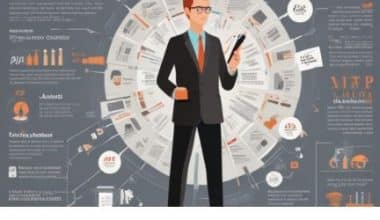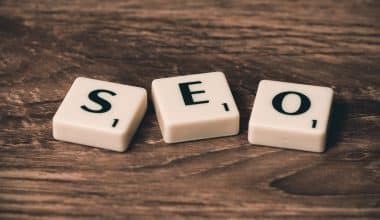Ever wondered how to start a newsletter and grow your audience effectively? You’re not alone. Many people feel overwhelmed at the idea of starting a newsletter, but with the right approach, it’s simpler than you might think. In this guide, I’ll share personal insights on how to start a newsletter, showing you practical steps to captivate your read
Key Points
- Newsletters provide a straightforward method to communicate with a large audience simultaneously.
- A newsletter allows for detailed explorations, comprehensive guides, and thoughtful commentary.
- Unlike regular posts, newsletters reach your audience directly, ensuring they don’t miss your updates due to algorithm changes or feed congestion.
- A business newsletter communicates solutions, tips, and product usage to strengthen relationships with subscribers.
- A well-designed header image enhances the visual appeal and shows professionalism.
What is a Newsletter?
A newsletter is a consistent form of communication that shares news, updates, and significant information. Newsletters can be tailored for personal use or for businesses. For companies, newsletters provide a straightforward method to communicate with a large audience simultaneously. In essence, a newsletter serves as an email campaign aimed at engaging past, current, and potential customers.
Additionally, newsletters can come in electronic form or print. Here, I’ll focus on digital newsletters, usually sent via email. Unlike a typical email, a newsletter’s primary purpose is to foster engagement. Effective newsletters create a digital bond with the reader, prompting them to visit your website or follow your social media channels.
From my perspective, newsletters are essential for keeping in touch with your audience. For example, sending a weekly newsletter with tips, product updates, and special offers has helped maintain strong customer relationships and boost engagement. A well-crafted newsletter keeps your brand at the forefront of your readers’ minds and consistently delivers valuable information.
Having explained what a newsletter is, next up is covering everything you need to know on how to start a newsletter.
How to Start a Newsletter
Here’s an extensive guide on how to start a newsletter, covering each essential step.
#1. Define Your Goal for the Newsletter
Understanding why you’re starting a newsletter is important because, it will guide your content, format, and overall strategy. Here are the key aspects to consider:
- Content Depth: Some content requires a more in-depth and nuanced approach that social media posts or blog entries can’t provide. Also, a newsletter allows for detailed explorations, comprehensive guides, and thoughtful commentary. Ask yourself how a newsletter can enhance your content creation process.
- Platform Independence: Having a communication channel that’s not influenced by third-party algorithms is invaluable. Reflect on how owning your audience’s contact details and engaging with them directly can strengthen your content strategy
- Feedback Loop: A newsletter can be a fantastic tool for gathering feedback. Think about how you will create a mechanism to receive regular insights, suggestions, and comments from your readers. This feedback can help you better align your content with their needs and interests.
- Monetization and Value Exchange: If your goal is to monetize your content, identify what unique value you can offer your audience. This could be exclusive insights, early access to content, or special discounts. Consider how this approach could be different from your current monetization strategies.
The first time I wrote a newsletter, I started by defining my goals, which was the key step that set the tone for everything else. Knowing my “why” gave me clarity and helped me focus my efforts on creating content that truly resounded with my audience.
#2. Identify Your Audience and Topic
Identifying your audience and choosing a topic are foundational steps when learning how to start a newsletter. Here’s how to approach this:
- Decide Your Focus: Will your newsletter promote blog posts, recommend products, or share long-form opinions? Your main objective should guide your content. For instance, if you aim to drive sales, your newsletter might feature product highlights and special offers.
- Understand Your Audience: Know who you are writing for. What are their interests? What problems can you solve for them? Why will they care about your content? This understanding will help you tailor your messages effectively.
- Niche and Content Ideas: If you already have a niche, think about the role your newsletter will play in your overall content strategy. Will it complement your existing platforms, or offer something entirely new? Brainstorm different newsletter ideas that fit within your niche.
Identifying my audience and choosing the right topics was transformative for my newsletter. It allowed me to connect more deeply with my readers and provide them with content they truly value.
#3. Develop a Strategy
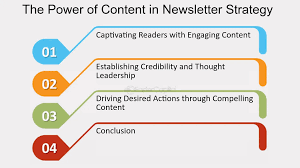
A successful newsletter needs a solid strategy. Here are the steps to create one:
- Determine Frequency: Decide how often you will send out your newsletter. Consistency is crucial—whether it’s daily, weekly, or monthly, stick to a regular schedule so your audience knows when to expect your updates.
- Set Performance Metrics: Identify key performance indicators (KPIs) such as open rates, click-through rates, conversion rates, and bounce-back rates. These metrics will help you gauge your newsletter’s success and identify areas for improvement.
- Plan Content in Advance: Map out your content calendar to align with product launches, special events, or seasonal topics relevant to your audience. This foresight will ensure your newsletter remains timely and relevant.
Developing a strategy helped me stay organized and consistent. By setting clear goals and regularly tracking your performance, you could continually refine your approach to meet your objectives.
#4. Get Creative
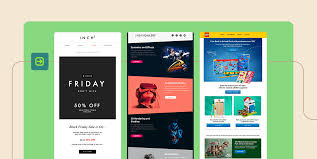
Designing your newsletter is your chance to be creative. Here’s how to make it engaging:
- Catchy Subject Lines: The subject line is your audience’s first sight. Make it catchy, intriguing, and relevant to encourage opens. Avoid clickbait; instead, be clear about the value inside.
- Branding: Always include your company name and logo in the body of your newsletter, preferably at the top. This consistency helps build brand recognition and trust.
- Visual Appeal: Use visuals that complement your content. High-quality images, infographics, and well-structured layouts can make your newsletter more engaging and readable.
Using a user-friendly template made designing my newsletters enjoyable. Also, experimenting with different designs and visuals helped me find a style that represented my brand well and appealed to my readers.
#5. Assess Performance and Start Monetizing
Once your newsletter has established a solid reader base, consider monetizing it. Here are some methods:
- Paid Subscriptions: If your content offers unique insights or premium value, consider a tiered subscription model. Offer basic content for free and premium content behind a paywall.
- Private Community: Create a private community for your most engaged readers. This could be a forum, a Slack group, or a membership site where you offer exclusive content and interactions.
- Products: Sell digital or physical products that complement your content. This could be anything from e-books and courses to branded merchandise.
- Sponsors: Partner with relevant brands for sponsorships. Offer them ad space or shoutouts in your newsletter. This can be a significant revenue stream, with rates varying based on your audience size and engagement.
- Services and Consulting: Offer consulting services or bespoke content solutions based on your expertise. Highlight case studies or testimonials in your newsletter to build trust.
- Affiliate Marketing: Recommend products or services you believe in and earn a commission on sales made through your referrals. Ensure these recommendations align with your content and genuinely benefit your readers.
- Events: Host exclusive events, webinars, or Q&A sessions for your premium subscribers. This can be an additional revenue stream and a way to deepen your connection with your audience.
For me, starting with sponsorships and gradually adding paid subscriptions worked well. Regularly assessing performance allowed me to adjust my strategy and maximize revenue effectively.
Here’s an infographic to highlight the benefits of having your own newsletter:
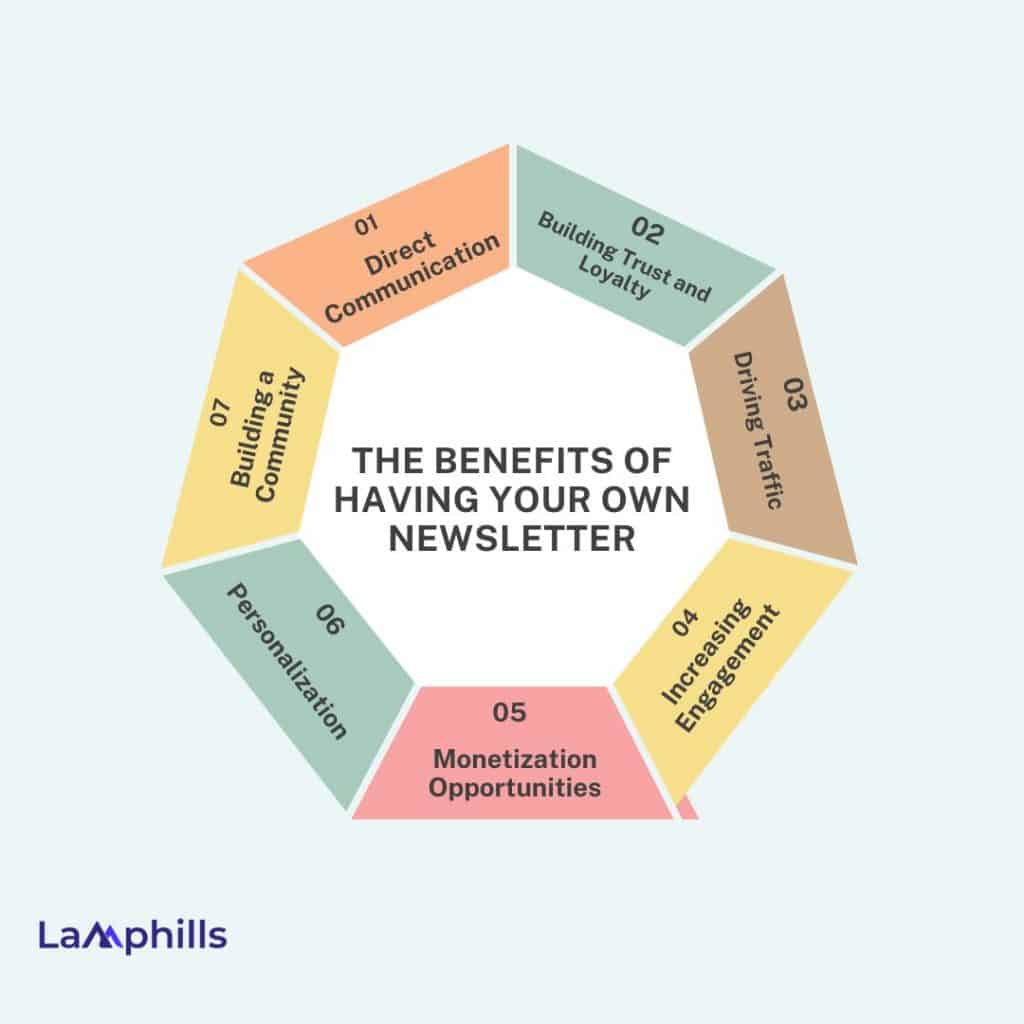
The Benefits Of Having Your Own Newsletter
The benefits of having your own newsletter are endless and can transform your relationship with your audience. Let’s go into the many advantages of having your own newsletter.
#1. Direct Communication
Having your own newsletter provides direct communication with your audience. Emails arrive straight in their inboxes, bypassing social media algorithms. This means you can share important updates, product launches, or personal stories directly. For example, when I launched a new service, my newsletter was the first place I announced it, ensuring my most engaged followers knew about it immediately.
#2. Building Trust and Loyalty
A newsletter helps build trust and loyalty with your audience. By consistently providing valuable content, you demonstrate your commitment to their interests and needs. Over time, this regular engagement establishes a reliable relationship. Sharing behind-the-scenes stories and insights in my newsletter has fostered a deeper connection with my readers, who often reply with their own thoughts and experiences.
#3. Driving Traffic
Newsletters are powerful tools for driving traffic to your website. By including links to your latest blog posts, videos, or products, you can guide your audience to your site. Each newsletter I send typically results in a noticeable spike in website visits. This direct line to your audience ensures that your content gets seen by those who are most interested.
#4. Increasing Engagement
Subscribers to your newsletter are inherently interested in what you offer, making them more likely to engage with your content. This means higher open rates, click-through rates, and overall interaction compared to other channels. I’ve found that my newsletter subscribers are more likely to comment on blog posts and participate in surveys, providing valuable feedback and insights.
#5. Monetization Opportunities
Your newsletter can be a significant source of revenue. You can include sponsored content, promote your own products or services, or even offer paid subscriptions for exclusive content. You can successfully use your newsletter to promote webinars and online courses which will eventually lead to increased sales and higher attendance rates.
#6. Personalization
Newsletters allow for a high degree of personalization. Using subscriber data, you can tailor your messages to individual preferences, increasing relevance and engagement. For instance, I use segmentation to send different content to new subscribers versus long-time readers, ensuring each group receives information that’s most useful to them.
#7. Building a Community
A newsletter can help you build a strong community around your brand. By sharing updates, asking for feedback, and encouraging interaction, you create a sense of belonging among your readers. Over time, this community becomes a loyal group of followers who engage with and support your content. My newsletter has been instrumental in creating a dedicated community of readers who regularly participate in discussions and share their experiences.
Here’s a downloadable checklist on the steps to starting a newsletter on Android:
How to Start a Business Newsletter
A business newsletter is an email sent to a company’s subscribers. It includes engaging content, product and feature announcements, promotions, deals, advice, and new blog posts. Furthermore, a business newsletter communicates solutions, tips, and product usage to strengthen relationships with subscribers. If you’re trying to start one and don’t know how to go about it well here you go.
Below are the steps to write an effective business newsletter
#1. Create a Short and Enticing Title
Titles are crucial for a business newsletter. They need to be creative, exciting, and straightforward. Avoid being too long or artificial. Direct and helpful titles catch the most attention. A good title acts as the first impression and can determine whether your email gets opened or ignored. Let me tell you one thing now; titles like “Exclusive Tips for Better Productivity” or “Unlock Your Special Discount Inside!” work really well. They promise value without being overly dramatic.
#2. Include a Call to Action
A strong call to action (CTA) ensures subscriber engagement. It prompts them to sign up, click for more info, or make a purchase. A clear CTA boosts interaction significantly. For example, phrases like “Learn More,” “Shop Now,” or “Get Your Free Guide” can be effective. When I included a specific CTA in my business newsletters, I noticed a marked increase in clicks and conversions. It’s essential to align the CTA with the newsletter’s content to make it feel natural and compelling.
#3. Write Interesting and Valuable Content
Valuable content keeps subscribers interested. Focus on what they want to read and provide relevant information. Adding images, infographics, and videos can make content more engaging. Addressing subscriber questions and struggles makes the business newsletter more appealing. Topics should be relevant to your audience’s interests and needs. For instance, if you’re targeting small business owners, articles on “Effective Marketing Strategies on a Budget” or “How to Manage Your Time Efficiently” are likely to resonate well. Engaging content means more than just text; use multimedia to keep it lively and interesting.
#4. Personalize Your Emails for a Better Open Rate
Personalization increases open rates. Use the subscriber’s name or specific information in the subject line. Personalized emails feel more direct and engaging, leading to better responses. For example, instead of a generic “Monthly Newsletter,” a personalized subject like “John, Check Out These Exclusive Offers!” can make a significant difference. Personalization can extend beyond the subject line to the email body, where addressing individual preferences or past behaviors can make the reader feel valued and understood.
#5. Keep It Short and to the Point
Craft catchy and relevant subject lines that are short and sweet—no more than 50 characters. Short subject lines are easily visible in inboxes and display well on mobile devices. Testing different subject lines helps find the most effective ones. For example, “Top 5 Tips for You,” “New Arrivals Just In!,” or “Your Exclusive Offer Inside” are concise and to the point. A/B testing different subject lines can provide insights into what works best for your audience, ensuring higher open rates and engagement.
#6. Write a Rough Draft
Start with a rough draft to get your ideas down without worrying about details. Then revise to perfect your business newsletter. This approach helps organize thoughts and improve content quality. A rough draft allows you to outline the main points and structure of your newsletter. Once the draft is complete, you can focus on refining the language, adding visuals, and ensuring the overall flow is coherent and engaging. This method prevents you from getting bogged down by perfectionism early in the process and ensures a smoother creation process.
#7. Send to Your List
Choose the right time to send your newsletter and use tools like SendInBlue to monitor open and engagement rates. Experimenting with different methods and styles helps refine your approach. Timing can significantly impact the success of your newsletter. Based on my experience, sending newsletters on Tuesdays or Thursdays in the mid-morning tends to yield better results. Tools like SendInBlue provide analytics that can help you track performance, understand subscriber behavior, and make data-driven decisions to optimize future newsletters.
How to Start a Newsletter on Linkedin
Starting a newsletter on LinkedIn allows you to share content directly with your followers. Unlike regular posts, newsletters reach your audience directly, ensuring they don’t miss your updates due to algorithm changes or feed congestion. Here’s how to start a newsletter on LinkedIn.
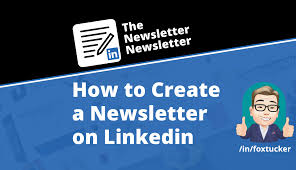
#1. Go to Your Profile Page
Head over to your LinkedIn profile page. Click on ‘Write article’ under the text box as if creating a new post. Instead of writing a feed article, click on the ‘Create a newsletter’ option.
This step is straightforward. Navigating to your profile is the easiest part, and LinkedIn’s interface is user-friendly. It feels similar to writing a standard post.
#2. Create Your First Newsletter
A window will prompt you to create your first newsletter. Remember, LinkedIn allows a maximum of five newsletters at a time. If you delete a newsletter, its branding will disappear, but the content remains as normal posts. You can’t create another newsletter for a month after deletion.
This limitation is essential to consider. It also keeps your newsletters focused and prevents content overload. Deleting a newsletter and waiting a month before starting a new one helps manage content quality.
#3. Add Newsletter Title and Description
Provide a title and description for your newsletter. Upload a branded header image to maintain a professional look. The recommended size for the header image is 300×300 pixels.
Crafting a catchy title and description is crucial. It’s the first impression your readers get. A well-designed header image enhances the visual appeal and shows professionalism.
#4. Start Publishing Content
After setting up, click done. Your newsletter is now active. Publish content as you would for an article, and your network will be notified. They’ll also receive an invitation to subscribe.
The notification system is a game-changer. It ensures your audience sees your content, making your efforts in starting a newsletter on LinkedIn worthwhile.
#5. Publish Future Newsletters
For subsequent newsletters, go to the same place, select the relevant newsletter, and publish your latest issue. Newsletters will also appear on your profile for new network members to see and subscribe to.
Consistency is key. Regular updates keep your audience engaged. Featuring newsletters on your profile helps attract new subscribers, expanding your reach.
Can You Start a Newsletter for Free?
Yes, you can start a newsletter without spending money. Platforms like Mailchimp, Substack, and TinyLetter provide free plans. With these services, you can set up your email list, design your newsletter, and send out editions at no cost. As your needs increase, you might choose to switch to a paid plan, but getting started is completely free.
What Should Be on the First Page of a Newsletter?
The first page of a newsletter should include:
- Newsletter Nameplate: This is where you place the newsletter’s title. It needs to be prominent so readers can quickly see what newsletter they’re holding.
- Table of Contents: List the main articles or sections included in the issue. This helps readers find what interests them right away.
- Teaser Box: Feature brief summaries or highlights of key articles. It grabs attention and encourages readers to dive into the full content.
Including these elements ensures the first page is both informative and engaging.
What is the 3 2 1 Newsletter Format?
The 3-2-1 Newsletter is a popular email newsletter format created by James Clear, the author of “Atomic Habits.” Each edition of the newsletter includes:
- 3 Ideas from Clear himself, often related to habits, productivity, or personal development.
- 2 Quotes from other thought leaders or authors that provide additional insight or inspiration.
- 1 Question for readers to ponder, meant to provoke reflection or action.
This format makes the newsletter concise, engaging, and easy to read. It provides valuable content without overwhelming the reader.





